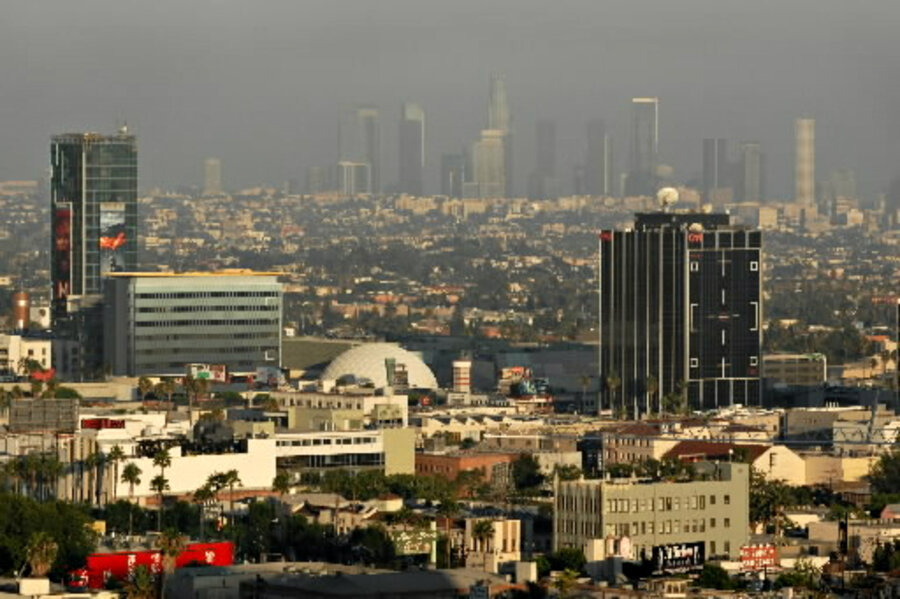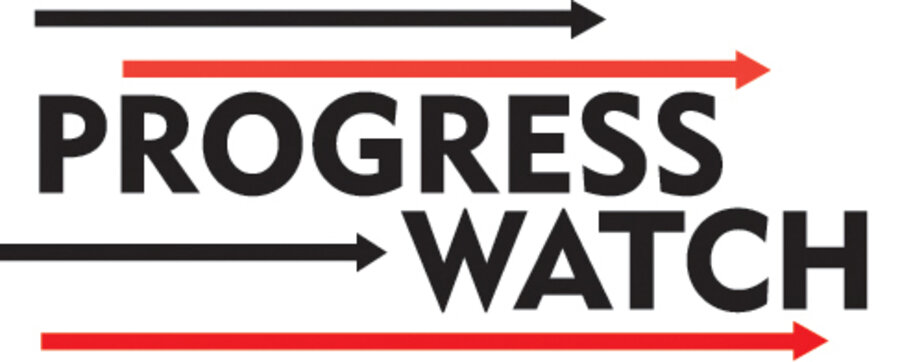US air pollution hits 10-year low, report finds
American cities with the dirtiest air have reached a new milestone in efforts to clean up their act.
The air quality in the US is at its highest level in a decade, according to a new report released by the American Lung Association (ALA) Wednesday. The nonprofit organization credits the trend to tougher environmental standards set for smog and soot in the air.
“We’re making real and steady progress in cutting dangerous pollution from the air we breathe,” said Charles Connor, American Lung Association president and CEO, in the organization's State of the Air press release. “We owe this to the ongoing protection of the Clean Air Act,” which has sought cleanup of major air pollution sources, such as coal-fired power plants and the fleet of older, dirtier SUVs, pick-up trucks, vans, and diesel engines.
Major improvements in air quality were seen in cities most polluted by ozone as well as particle pollution – a noxious mix of ash, vehicle exhaust, and aerosols. As of 2010, ozone levels across the country had dropped 13 percent since 2000, while particle pollution was 24 percent lower, according to the ALA, which began to monitor air quality in 2000.
Los Angeles remained the city with the worst ozone-pollution problem. But it – along with Pittsburgh, Cincinnati, and more than half of the country’s most smog-polluted cities – reported their lowest air-pollution levels in 13 years, based partly on data collected by the US Environmental Protection Agency (EPA).
The trend toward cleaner air continued even as the economy began rebounding in 2008 following the recession, giving rise to higher energy use and more miles driven, the report says.
“We know now it’s possible to have both,” says ALA Assistant Vice President Janice Nolen. “In spite of economic growth, we’ve been able to reduce pollution, and that means that these are permanent, real changes that have allowed us to have cleaner air.”
All but three of the 25 cities with the most year-round particle pollution improved since last year’s report.
Meanwhile, Santa Fe, N.M.; Bismarck, N.D.; Duluth, Minn.; Honolulu; and Vero Beach, Fla., ranked as the cleanest cities in the country.
The EPA estimated in 2010 improvements brought on by the Clean Air Act since 1990 have saved the lives of 160,000 people. The New England Journal of Medicine reported in January 2009 that cleaner air has added nearly five months to the average US life expectancy.
“But despite these improvements, America’s air quality standards are woefully outdated,” Mr. Connor said, “and unhealthy levels of air pollution still exist across the nation, putting the health of millions of Americans at stake.”
The ALA warns that some 127 million Americans – more than 40 percent of the population – still live in areas that it graded with an F for air quality. These people suffer pollution levels that are often too dangerous to breathe, the report says.
The most-polluted cities detailed in the report were heavily concentrated in California. Los Angeles, Bakersfield, Fresno and Hanford registered especially high levels of pollution, due in large part to their geographical qualities. Many parts of the state have almost perfect conditions for air pollution, Ms. Nolen says. The warm climate combined with it’s curved topography and high traffic volume make it possible for air pollution to linger and spread.
Recent proposals from Republicans in Congress have included delaying implementation and blocking enforcement parts of the Clean Air Act, and limiting the EPA’s ability to consider all of the scientific evidence regarding the harm to public health.
But Nolen says it’s obvious the track we’re on is the right one.
“This progress is proof that the system we’ve had in place for 40 years works," Nolen says.






